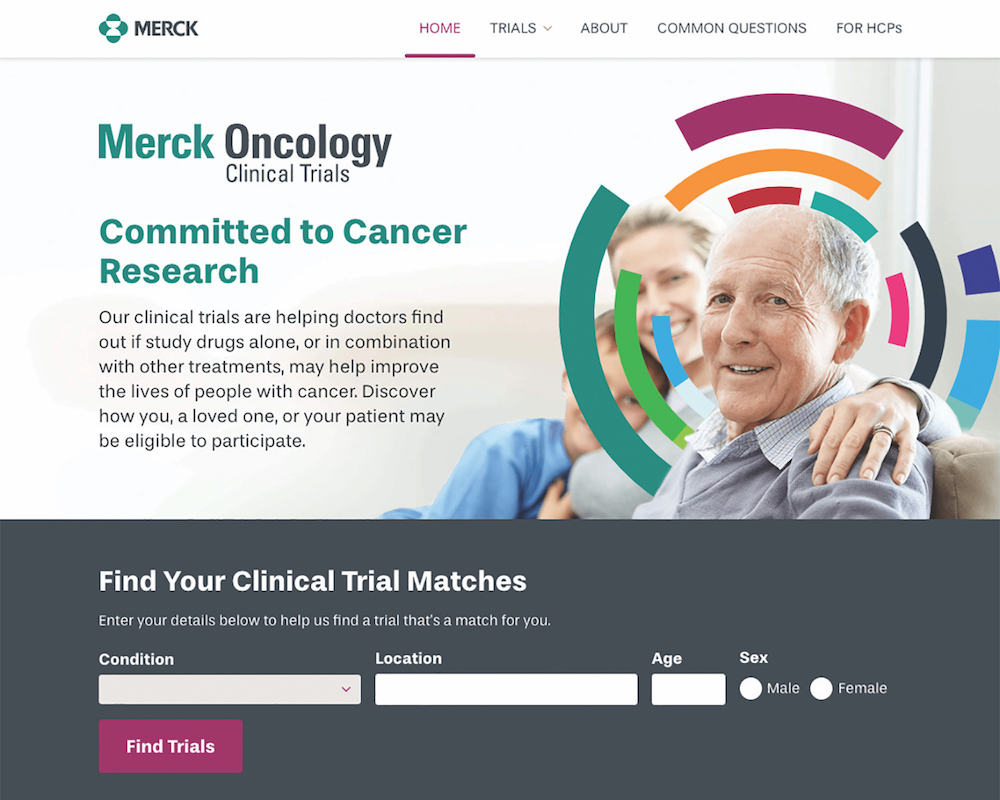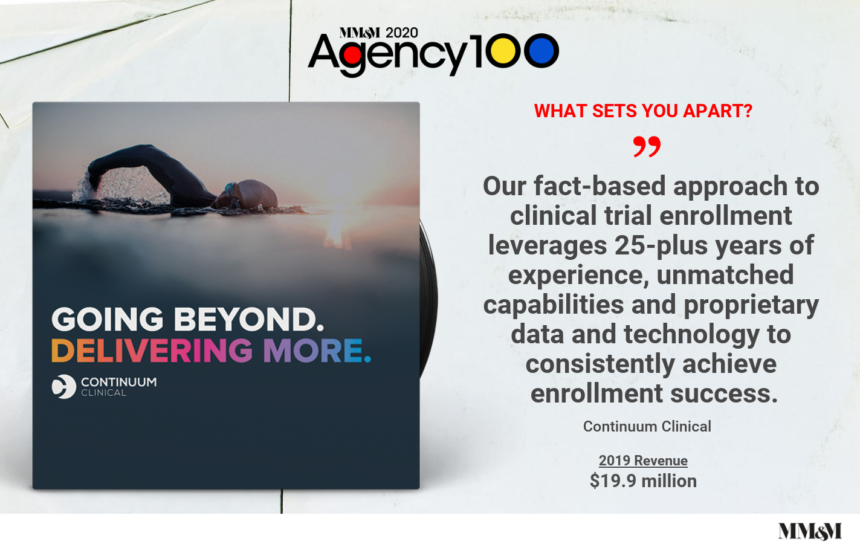Based on its 21% revenue drop in 2019 to $19.9 million from 2018’s take of $25.3 million, you might think that Continuum Clinical endured one of its most challenging years in some time. But agency president Neil Weisman believes the figures are a bit misleading, noting that a “perfect storm of anomalies” concentrated in a single month did most of the damage.
First, a slate of anticipated clinical trial work disappeared when Continuum fell prey to post-merger agency consolidation. Then a trial yielding positive data was shut down due to an unusual safety glitch — and shortly thereafter, a second one met the same unexpected fate.
“You can appreciate how that might have impacted our business,” Weisman says. “But we were able to weather it and still had a lot of great opportunities. If you remove the anomalies, it was a great year.”
To that end, Continuum reports that it added 26 new accounts in 2019, with its development of physician referral networks serving as a major growth catalyst. “That’s a service that has really taken off this year,” Weisman says.
These networks funnel a steady stream of patient referrals from outside physicians to the practice or organization conducting clinical research.
“It’s a very comfortable way for research sites to get leads from outside their practice that they don’t know but can trust will be qualified,” Weisman explains. “Those physicians will have already gone through their medical records. They’ll know who they are and have a good idea of what that clinical trial is looking for.”

Continuum also made strides toward creating what Weisman calls “an unprecedented data and analytics platform that can do what no one else in our space has done before.” It also hired a new VP of data and analytics, Paul Ivsin, to run it.
Weisman says the idea behind the platform is “to create a whole new level of transparency in literally every aspect of the recruitment process” — including online screening, all communications between research sites and patients, insights into why patients are or aren’t enrolling and the patient’s journey through the trial. Give Continuum points for its sense of being part of a larger mission: The platform is open-source, meaning that even the competition can access it.
Weisman believes the fluidity and scope of the analytics platform will position Continuum well for the post-COVID world. Until then, the agency will struggle with the challenging reality of conducting clinical trials amid a pandemic.
The agency has kept its oncology work on track and continues to run studies with what Weisman terms “surprisingly high enrollment numbers.” But its clinical research projects in infectious diseases, rheumatology, cardiology and pulmonology are on hold because their enrollees would predominantly be high-risk patients.
In the interim, look for Continuum to develop catalyst plans designed to help clients keep patients enrolled in trials. This, Weisman adds, should help sponsors “uniquely position themselves so that once this industry gets a wheels-up, they can outflank their competition.”
The best marketing we saw in 2019…
Gilead’s Be You campaign for Biktarvy is patient-centric and does an incredible job of working to remove the stigma of HIV. The message is uplifting and emphasizes that the condition shouldn’t (and doesn’t) define who the patients are. — Neil Weisman
From the June 01, 2020 Issue of MM+M - Medical Marketing and Media







